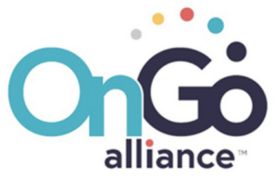So far, the prominent use of the Innovation Spectrum in the Citizens Broadband Radio Service (CBRS) has been by municipalities for fixed wireless access, by enterprises for internal communications and by mobile network operators for increased capacity, but there are opportunities to convert those independent networks into economical neutral host networks to (NHN) to address the pain point of poor in-building wireless coverage, Joel Lindholm, Facebook, said during an OnGo Alliance webinar on October 28. Catch the replay here.
OnGo’s webinar was held to discuss the opportunity for enterprises and venue owners of using the CBRS band to deploy OnGo neutral host network (NHN) indoor wireless solutions. Speakers in the session included Youssef Abdelilah, American Tower; Oren Binder, OnGo Alliance; and Lindholm.
Binder addressed the indoor cellular challenge where poor coverage harms worker productivity. “On the operator side, it’s not their fault that there is bad coverage, but there are dead spots,” he said. “The building could either be very old, or actually very new and have LEED insulation, which bounces the macrocell RF off.”
Investments in 5G coverage nationwide by the carriers has reduced the amount of capital to build out in-building systems, according to Binder. He noted the pain point of in-building coverage has increased in the last several years as people have grown dependent on their smartphones, demanding not only voice but high throughput data, as well.
Why an OnGo Neutral Host Network Is a Preferred Model
Lindholm agreed with Binder that the industry has never had a good, scalable solution for neutral host in-building wireless because traditional models require the mobile operators to provide their own backbone networks. “If you’re bringing that signal inside the building, whether by DAS or small cell, it adds complication and coordination between the mobile operators and the venue itself, which adds time and expense and is just a difficult approach to implement,” he said.
An OnGo NHN, using the Citizens Broadband Radio Service spectrum, can solve coverage problems for smaller entities, such as hospitals, hotels and general office buildings that may not have been able to justify deploying an in-building wireless system before, according to Lindholm. “If it’s done right, then we think that an OnGo NHN is the way to eliminate the pain points both from the venue perspective as well as from an operator perspective,” he said.
An NHN is a public facing network that needs an entity to bring that network to the property owner and sit in between the venue and the mobile operator networks, as well as serving as a liaison between each of the different operators.
The OnGo NHN operator needs to solve a business problem of the venue operator and capture the value proposition for the operator as well as the venue owner. Ultimately, the end-to-solution must be easily deployed and produce adequate return on investment, according to Abdelilah.
“The return on investment plus the total cost of ownership actually drive whether this is the right business model,” Abdelilah said. “It is becoming like an IT [information technology] deployment. Depending on whether you have a brownfield or greenfield deployment, you can leverage your IT infrastructure. That is the beauty of the OnGo neutral host solution.”
An independent private network can be converted to be a public facing neutral host network at any time, he added.
“The nice thing about the OnGo neutral host is, today, the owner can deploy the network and use it for their own purposes and then, later, they can think about bringing in the neutral host for seamless connectivity and they can bring in an experienced OnGo operator,” Abdelilah said.
The panel discussed three OnGo NHN business models: NHN as a Service; venue owned, operated and managed; and a hybrid model. OnGo small cells are 68 percent less expensive per square foot than a DAS, according to a Mobile-Experts study, and are just a little more expensive than WiFi.
“The OnGo neutral host network economics are very compelling. An existing WiFi system can reduce the costs even more,” Abdelilah said. “Like WiFi, it is easy to deploy. It can be deployed quickly, within months.” Lindholm said, because the OnGo NHN will be deployed across a wide range of enterprises in terms of size, a wide range of business models will come into play.
For more information about OnGo Alliance solutions, visit here. To watch a replay of the webinar, visit here.




Reader Interactions